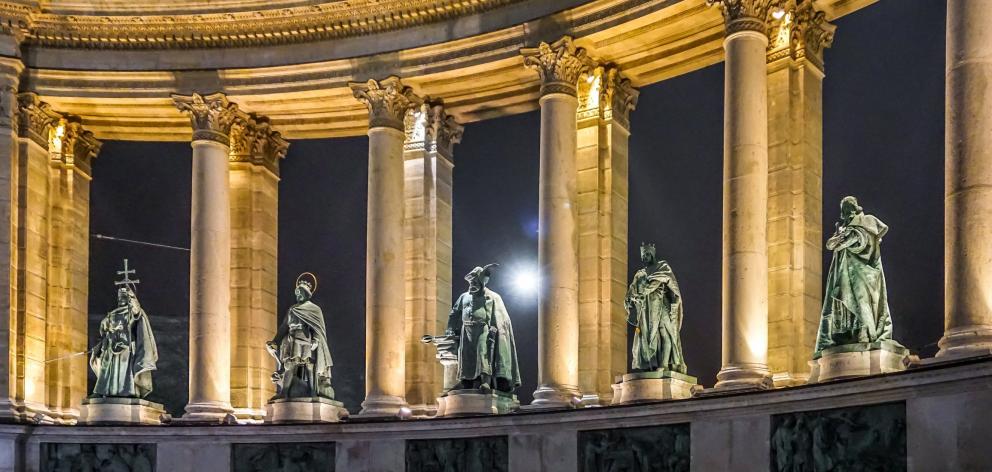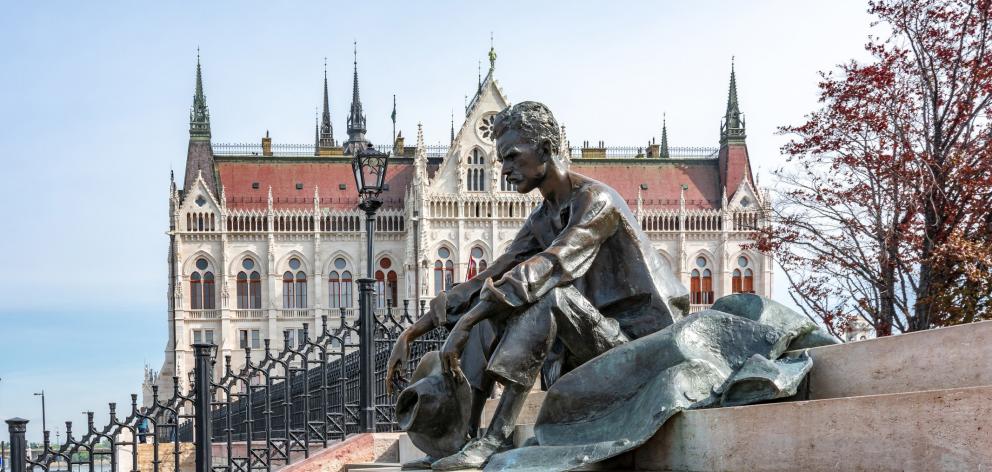
Every city commemorates its heroes in bronze, but few do it as brilliantly as Budapest.
Hungary celebrated a thousand years as a nation in 1896. They built a Heroes Square and peopled it with near-mythic representations of their champions. There's a ring of bronze chieftains astride their steeds: giant warriors with fearsome weaponry, wings on their helmets, one horse festooned with antlers, men and animals with eye sockets that drill through you all the way to the underworld. Fully ready to conquer Mordor. Or Transylvania, as it was in their case.
There's the militant archangel Gabriel, wings erect, and a rampant King St Istvan, or Stephen, who united the country and converted them all to Christianity. King Andras, who led the largest crusade in Christendom; Lajos the Great, who owned more silver than the French and English kings; King Matyas, who created the largest library in Europe outside the Vatican. Also Kalman the Learned, who declared that vampires and witches do not exist, thus sparing many persecuted people from being burned at the stake.

A statue to the 1848 revolutionary leader Lajos Kossuth depicts the hero and his compatriots with heads bowed. Are they full of sorrow, or ashamed? Their uprising brutally suppressed by the Emperor Franz Joseph, they stand there, knowing they are soon to be executed.
There was an outcry in 1927 when the statue was unveiled, near the enormous gilt-domed Parliament on the banks of the Danube. The Soviets, when they arrived in 1945, hated it even more and had it replaced with something more conventionally heroic. And after they departed, the Soviet version was itself torn down. The original, now with the added lustre of being an anti-Soviet symbol, has recently been restored.

On a set of steps at the other end of the Parliament building sits a bronze man staring at the river running before him. Face thin, hair wild, cuffs turned back to expose boney wrists, his coat thrown down beside him. This is Attila Jozsef, a poet. He wrote for the people, and was loved, in the first part of the 20th century. He clutches a battered old hat.
You don't see many like that, either.
There are the usual generals on horseback and puffed-up politicians, but among them other more fascinating works: an old man carrying a baby on his shoulders; and the late 19th-century reformist hero Ferenc Deak, not standing proudly but seated, with a book. Overwhelmingly, though, you can't help noticing those remembered in all this bronze and stonework are men.
Though not all. Near the poet, at the edge of the road, where a wall drops to the river below, there's a row of shoes. Still in pairs, but slightly scattered, as if suddenly abandoned. This is also an artwork, made only in 2012. Pebbles have been placed in the shoes, and wrapped sweets.

Late in World War 2, members of the Hungarian fascist militia, the Arrow Cross, brought a group of Jews here. Women, some children, some men. They told them to stand on the edge above the swiftly flowing water and step out of their shoes. The militia were low on bullets, so tied the hands of the Jews and chained them together. Then they shot the first one.
It wasn't one group but many. Arrow Cross killed thousands of Hungarians, many on the banks of that river. It's easy to say art survives. Better, perhaps, in Budapest, to say art commemorates so the people can too. - The New Zealand Herald
Checklist
• Getting there
APT’s 15-day Magnificent Europe River Cruise sails both ways between Budapest and Amsterdam on the Danube, Main and Rhine rivers. Prices start at $9395pp, twin share (based on July 6, 2019 departure). Includes the Grand Empress Steam Train and Godollo Palace Experience (April — September departures only) and a Fly Free Superdeal when booking select departures before March 15.












